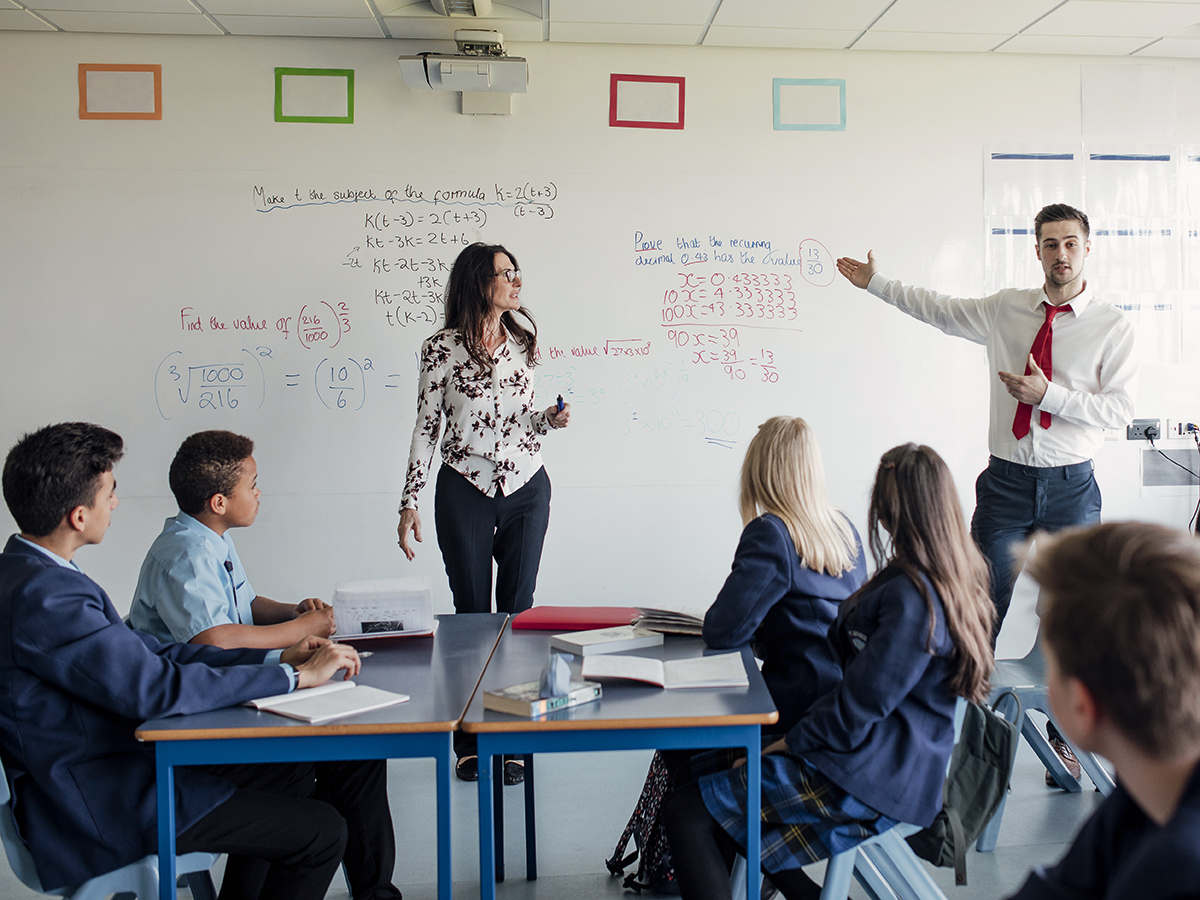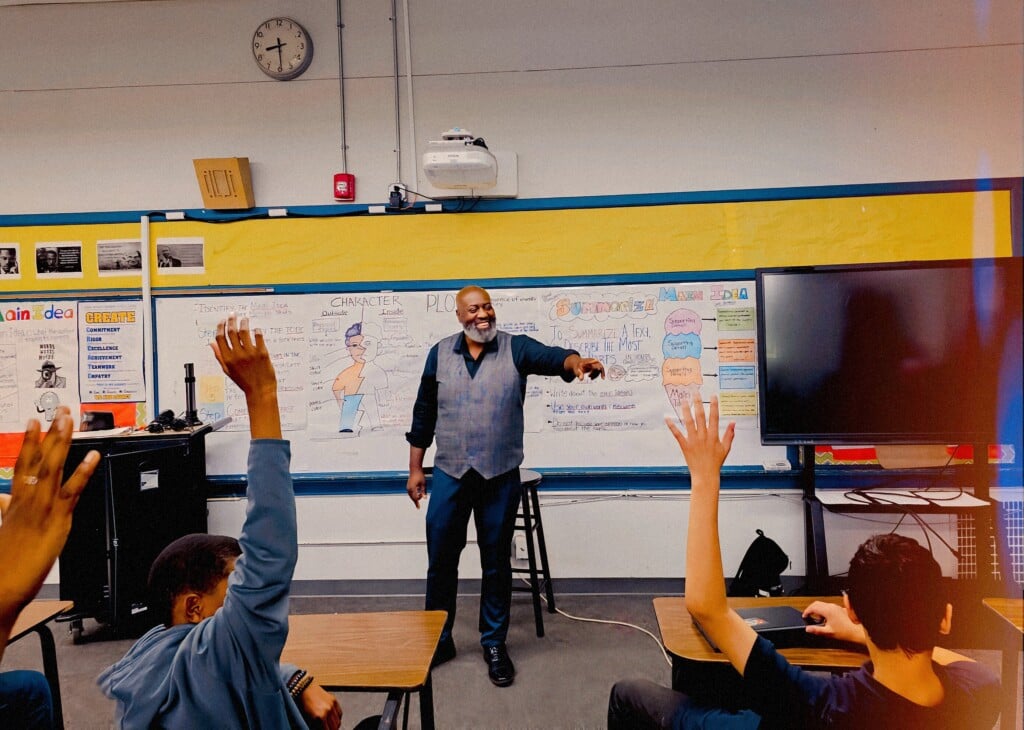Enroll in Primary Science Tuition Singapore for a Strong Science Foundation
Enroll in Primary Science Tuition Singapore for a Strong Science Foundation
Blog Article
A Comprehensive Overview to the Numerous Understanding Approaches in Key Scientific Research Direction
The expedition of diverse knowing methods in primary scientific research direction provides a chance for teachers to improve student engagement and comprehension considerably. By analyzing hands-on learning techniques, inquiry-based methods, and collaborative strategies, we can recognize efficient practices that satisfy different discovering styles. Additionally, the assimilation of technology and differentiated guideline plays a critical function in fostering a comprehensive atmosphere. The inquiry stays: how can these techniques be effectively carried out in the classroom to optimize their impact? The response hinges on a better examination of each approach and its ramifications for training scientific research.

Hands-On Understanding Techniques
Hands-on knowing methods play a crucial role in primary science direction, engaging trainees in energetic expedition and trial and error. These approaches permit students to interact directly with phenomena and materials, fostering a deeper understanding of scientific concepts. By using manipulatives, models, and real-life experiments, educators create an environment where students can observe, hypothesize, and test their ideas.
Such techniques not just boost understanding yet additionally grow essential reasoning and analytic skills. When students take part in tasks like building simple machines, planting seeds, or performing chain reactions, they are urged to ask inquiries and seek answers via their very own observations. This experiential method helps to debunk complicated scientific concepts, making them a lot more relatable and easily accessible.
Moreover, hands-on knowing advertises partnership among peers, as pupils commonly operate in teams to carry out experiments or share findings. This synergy not only improves their discovering experience but additionally develops essential social abilities. Ultimately, incorporating hands-on methods in key scientific research direction cultivates a long-lasting love of discovering and interest about the all-natural world, laying a strong foundation for future academic searches in science and beyond.
Inquiry-Based Discovering
Inquiry-based knowing is an instructional strategy that motivates trainees to ask concerns, investigate sensations, and create their very own understanding of clinical ideas. This method changes the focus from traditional teacher-led guideline to a much more student-centered experience, where learners take the campaign in their educational journey. By fostering inquisitiveness, inquiry-based learning promotes much deeper engagement with the material, enabling pupils to explore subjects in a significant context.
In practice, this method often includes hands-on experiments, monitorings, and important thinking activities that align carefully with the clinical approach. Students are motivated to develop theories, layout investigations, and evaluate data, which cultivates essential abilities such as problem-solving and logical thinking. The duty of the educator in this structure is to help with exploration, assisting students through the inquiry process while encouraging independent idea and cooperation.
Moreover, inquiry-based understanding supports a sense of ownership over the learning procedure, encouraging pupils to go after understanding actively. This approach not just improves understanding of scientific principles yet likewise promotes a lifelong love for learning, equipping pupils with the abilities required to navigate an increasingly complex globe.
Collaborative Understanding Approaches
Collaborative understanding techniques empower pupils to participate in meaningful communications with peers, fostering a shared obligation for their instructional results. In key scientific research instruction, these methods urge students to interact to check out clinical principles, resolve issues, and perform experiments (primary science tuition Singapore). By getting involved in group activities, trainees can utilize varied perspectives, enabling richer understanding and retention of clinical expertise
One key element of joint learning is the emphasis on interaction skills. Trainees have to articulate their thoughts, listen actively to others, and work out ideas, every one of which are critical proficiencies in both real-world and academic contexts. This social interaction not only enhances their understanding of scientific principles however additionally advertises teamwork and dispute resolution abilities.
Moreover, collective discovering often causes raised inspiration and involvement. They are more likely to take ownership of their learning journey when students see the worth of their payments within a group. Teachers can facilitate click here to read this process by developing structured team jobs that align with curriculum objectives while supplying advice on efficient collaboration strategies. Generally, incorporating collective learning techniques in primary scientific research instruction grows a dynamic discovering atmosphere that prepares pupils for future academic and social obstacles.
Technology Assimilation in Scientific Research
The integration of innovation in primary science guideline boosts discovering experiences by giving innovative tools and sources that support different training approaches, consisting of joint knowing - primary science tuition Singapore. Making use of electronic systems, simulations, and interactive applications allows trainees to involve deeply with clinical concepts, promoting a more hands-on technique to knowing
Online research laboratories, as an example, enable learners to carry out experiments safely and effectively, advertising inquiry-based understanding. These devices can simulate real-world scientific situations, permitting pupils to visualize complicated processes that would be challenging to replicate in a conventional classroom setting. Moreover, innovation cultivates interaction and collaboration among trainees, as they can share findings and function together on jobs with on the internet platforms.
Additionally, multimedia discussions and instructional videos have a peek at these guys can enhance lessons by accommodating diverse learning designs, making abstract principles extra available. Data analysis tools additionally encourage pupils to gather and interpret clinical information, strengthening important believing abilities. Generally, the calculated consolidation of innovation in key scientific research direction not just improves involvement however also prepares trainees for a technologically sophisticated culture, furnishing them with essential abilities for future scientific undertakings.
Separated Instruction Methods
Differentiated guideline techniques are essential for attending to the varied needs of students in main scientific research education. These techniques make it possible for teachers to customize their teaching approaches to accommodate varying capabilities, passions, and learning styles within the classroom. By utilizing set apart instruction, instructors can develop a comprehensive setting that promotes interaction and improves understanding of scientific concepts.
One reliable approach is to utilize adaptable organizing, which permits students to collaborate with peers at similar ability degrees or with varying perspectives. This approach encourages peer knowing and promotes crucial thinking. Additionally, offering choices in assignments can encourage pupils, permitting them to choose jobs that resonate with their interests while still meeting curricular purposes.
In addition, integrating tiered tasks is one more important technique. Deliberately jobs with differing levels of intricacy, instructors can make sure that all students are appropriately tested, no matter their proficiency. Making use of developmental evaluations to evaluate understanding more allows teachers to readjust their training methods dynamically, making certain that each Website student receives the assistance they need.
Inevitably, carrying out distinguished guideline methods in primary scientific research education not just enhances pupil knowing end results but additionally cultivates an interest for science, preparing pupils for future academic quests.

Conclusion
In recap, efficient primary scientific research direction necessitates a complex method that encompasses hands-on understanding, inquiry-based techniques, and collective methods. The integration of modern technology and distinguished guideline additionally accommodates varied understanding styles, cultivating a setting for expedition and essential thinking. By applying these methods, educators can boost student interaction and comprehension, inevitably nurturing a long-lasting enthusiasm for scientific research and inquiry. Such detailed approaches are necessary for establishing educated and curious future researchers.
The expedition of diverse discovering approaches in key science direction provides a possibility for instructors to enhance trainee involvement and understanding substantially.Hands-on understanding strategies play a crucial role in key scientific research guideline, involving pupils in active exploration and experimentation.Inquiry-based learning is an educational technique that urges trainees to ask questions, investigate sensations, and build their own understanding of clinical ideas.Collaborative learning approaches encourage trainees to engage in purposeful interactions with peers, fostering a common responsibility for their instructional results. In general, including collective learning strategies in main scientific research direction grows a dynamic learning atmosphere that prepares students for future scholastic and social challenges.
Report this page